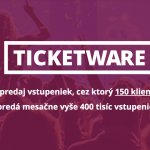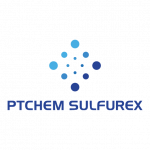When Košice was designated as the European Capital City of Culture (EHMK) for 2013, the award of this title brought great benefits in terms of the visibility of the city and opportunities for European cooperation, but it also led to a boost in energy for starting processes of transformation.
When the city started to form the EHMK project team and decide on the concepts of the candidature, a group of young and enthusiastic volunteers were working in the independent culture centre of IC Culture Train. The project concept which this group presented to the city representative was complex and ambitious.
The INTERFACE project drew inspiration from contemporary trends and approaches in Western Europe towards the revitalization of obsolete and abandoned buildings and infrastructure, particularly of former military and industrial premises. In many cases, the development and increased accessibility of such cultural structures has served as a catalyst for the revitalization of many forms of civic creativity and activism, in particular through activating communities in specific, often disadvantaged parts of cities. Examples of this approach can be found in Berlin, east London and the Ruhr area of Germany.
This approach became the main motive in Košice in the conceptualization of investment projects and also in the program arrangements. The two most important strategic aims of the project were to support the creative industries and to support community development through the channels of international cooperation.
The EHMK project offered a vision in which the creative industries also had a role to play. “The vision of Košice is founded upon a deeper understanding of the current cultural environment; on the trends, values and processes in life, creativity and art. In the global world it is difficult to define the place of culture and art within a system of coordinates, or as a point on the map, because it encompasses an entire space; its various elements meet, interact and influence each other in real time. We live in a period in which everything is related to everything, and each element is of equal importance. Therefore, our project vision of Košice is not based on the unrealistic ambition of becoming a centre of activity and action, but rather on the concept of a place where people communicate with each other, with culture, and with the whole of Europe. Košice wants to become an INTERFACE, providing citizen-users with access to the most important software – culture, through which to explore the world and themselves.”
The aim of the project was to create an environment which enabled the interaction of various different spheres of cultural and social life; to create a space in which groups, themes, areas, and individuals could find new forms and methods of communication and collaboration. The project offered specific steps and systematic measures for the development of culture and the creative industries. At the level of local policy, it primarily addressed the transformation of the system of cultural support, grant support, business support for creative industries, education and the development of talent and professional skills.
The project adopted a straightforward strategy in terms of the implementation of investment projects. Each of these projects was conceived as a reconstruction and revitalization of existing infrastructure which would ensure that the new functions of the facilities would be accessible to the citizens of the city. The cultural and artistic programme, community activities and public spaces became an important part of the cultural offerings of the city. Košice gained tens of thousands of square metres of quality infrastructure which meets the highest European standards. Among the most significant of these projects are:
Kasárne/Kulturpark
This complex of former barrack buildings from the 19th century is located close to the city centre in a historic park of outstanding value. The reconstructed buildings now offers a complex background for the creation, formation and support of art and contemporary creative, authentic and experimental culture and serves as a base for the production and support of a wide range of artistic activities across many genres.
Kunsthalle
This former indoor swimming pool is a building of great architectural value which was built at the end of the 1950s and the beginning of the 1960s, but it had lain empty since structural damage to the pool caused by geological changes as a result of falling groundwater levels had led to its closure in the early 1980s. After reconstruction, the complex now serves as modern exhibition space for international displays of visual arts.
SPOTs/Electrical substations
A series of eight obsolete electrical substations built in the 1970s and 1980s on the outskirts of the city were reconstructed to create new public spaces for community development and local cultural activities in order to offer improved cultural facilities to the residents of these suburban areas who had previously lacked access to such amenities.
Further projects such as the renovation of the Amphitheater and Craftsmans‘s Lane and the regeneration of a number of city parks also brought new public spaces for the city.
However the city authorities were not the only driving force behind the EHMK project. Partners such as the Košice Regional Authorities and the Ministry of Culture of the Slovak Republic also contributed to the creation of cultural infrastructure.
A further important role in the entire process was also played by independent cultural groups and individuals and their efforts to affect real development in the city and to improve the profile of Košice through their own works and activities.
A number of important organizations were formed or became involved with the EHMK project during the course of its development which are now among the most significant and popular features on the Košice cultural scene. The most important of these are organizations are Tabacka Kulturfabrik, the largest unofficial cultural centre, the DIG Gallery for new media, the KAIR art residency project, the Street Art Communication – OMG open city gallery, the MAZAL TOV festival, East Coast, Cinefil – Kino Úsmev, the Na Perón Theatre, Chat – the Centre for Art Therapy or the high profile White Nights event. These organizations and many others have been active in the city for a long time, and after 2013 they have continued to fulfil the role envisaged by the organizers of the EHMK project, to make Košice a more attractive and better place for its inhabitants and visitors.
A significant fact of the project was that the city took advantage of the opportunity which it had been offered and utilized the project to stimulate growth. This was particularly true in the case of the opportunities for international collaboration and networking which the project provided, and the role of the project in raising the profile and economy of the city and its region should not be underestimated.
Research which was carried out by the Technical University of Košice revealed that the culture of Košice had been rejuvenated by the EHMK project and that nearly one third of all visitors to EHMK events were students.
The EHMK project also has an inclusive character. Lower income groups such as the unemployed and retired also participated in the program. Over time, all age groups in the city came to identify with the project. The project also introduced new genres of cultural activities to the city such as art in the public domain which has grown in popularity. A further benefit of the project is that it has led to an increase in the attendance of cultural events among local inhabitants. Improved access to culture has spread from the city centre to the suburbs and housing estates of the city, thereby decentralizing culture geographically to the periphery of the city. Local inhabitants were also satisfied with the quality of the events, with a majority of respondents providing positive reviews. Nearly 90% of participants in the research would recommend EHMK events to their friends.
The results of the research show that the general public enjoyed art in public spaces, a genre which had not previously been known in Košice.
In terms of the range, quality and accessibility of culture, it is undoubtedly the case that access to cultural activities had increased outside the centre of the city, in particular in the housing estates. Locals were satisfied with the quality and range of activities on offer.
The research results also reported the following findings:
- The economic benefits of EHMK boosted the regional GDP by €70 million, an increase of approximately 1%.
- 62 % of local inhabitants would be willing to make an annual contribution of an average value of €7.97 in order to maintain the legacy of the EHMK project.
- The annual estimated value of the project to the population of the city is approximately €2.3 million.
- Košice underwent a rapid generational transformation which changed the atmosphere of the city and positively affected both its internal and external image.
- Despite pressure to adjust the quality of events to the demands of specific audiences, the project walked a fine line between elitism and mainstream demands and was able to achieve its conceptual goals.
- The main goals of the EHMK project were specified differently – they were long term in nature rather than simplified concept of the project as a single year series of events as cultural capital. This led to conflicts between the communication of the project and the expectations of the public.
- A combination of residencies, visits from creative industry experts and the development of the city, and the mobility of the cultural organizers provided experience and expertise for future potential and the conceptualization of new ideas.
The city gained more than just infrastructure; it gained experience through the implementation of the largest cultural project in the history of Slovakia. Its complexity and effects will be visible for many years to come, and the experience will make it easier to accept the challenges and changes that such a big step bring about.
Transformation through investment in culture
When Košice was designated as the European Capital City of Culture (EHMK) for 2013, the award of this title brought great benefits in terms of the visibility of the city and opportunities for European cooperation, but it also led to a boost in energy for starting processes of transformation.
When the city started to form the EHMK project team and decide on the concepts of the candidature, a group of young and enthusiastic volunteers were working in the independent culture centre of IC Culture Train. The project concept which this group presented to the city representative was complex and ambitious.
The INTERFACE project drew inspiration from contemporary trends and approaches in Western Europe towards the revitalization of obsolete and abandoned buildings and infrastructure, particularly of former military and industrial premises. In many cases, the development and increased accessibility of such cultural structures has served as a catalyst for the revitalization of many forms of civic creativity and activism, in particular through activating communities in specific, often disadvantaged parts of cities. Examples of this approach can be found in Berlin, east London and the Ruhr area of Germany.
This approach became the main motive in Košice in the conceptualization of investment projects and also in the program arrangements. The two most important strategic aims of the project were to support the creative industries and to support community development through the channels of international cooperation.
The EHMK project offered a vision in which the creative industries also had a role to play. “The vision of Košice is founded upon a deeper understanding of the current cultural environment; on the trends, values and processes in life, creativity and art. In the global world it is difficult to define the place of culture and art within a system of coordinates, or as a point on the map, because it encompasses an entire space; its various elements meet, interact and influence each other in real time. We live in a period in which everything is related to everything, and each element is of equal importance. Therefore, our project vision of Košice is not based on the unrealistic ambition of becoming a centre of activity and action, but rather on the concept of a place where people communicate with each other, with culture, and with the whole of Europe. Košice wants to become an INTERFACE, providing citizen-users with access to the most important software – culture, through which to explore the world and themselves.”
The aim of the project was to create an environment which enabled the interaction of various different spheres of cultural and social life; to create a space in which groups, themes, areas, and individuals could find new forms and methods of communication and collaboration. The project offered specific steps and systematic measures for the development of culture and the creative industries. At the level of local policy, it primarily addressed the transformation of the system of cultural support, grant support, business support for creative industries, education and the development of talent and professional skills.
The project adopted a straightforward strategy in terms of the implementation of investment projects. Each of these projects was conceived as a reconstruction and revitalization of existing infrastructure which would ensure that the new functions of the facilities would be accessible to the citizens of the city. The cultural and artistic programme, community activities and public spaces became an important part of the cultural offerings of the city. Košice gained tens of thousands of square metres of quality infrastructure which meets the highest European standards. Among the most significant of these projects are:
Kasárne/Kulturpark
This complex of former barrack buildings from the 19th century is located close to the city centre in a historic park of outstanding value. The reconstructed buildings now offers a complex background for the creation, formation and support of art and contemporary creative, authentic and experimental culture and serves as a base for the production and support of a wide range of artistic activities across many genres.
Kunsthalle
This former indoor swimming pool is a building of great architectural value which was built at the end of the 1950s and the beginning of the 1960s, but it had lain empty since structural damage to the pool caused by geological changes as a result of falling groundwater levels had led to its closure in the early 1980s. After reconstruction, the complex now serves as modern exhibition space for international displays of visual arts.
SPOTs/Electrical substations
A series of eight obsolete electrical substations built in the 1970s and 1980s on the outskirts of the city were reconstructed to create new public spaces for community development and local cultural activities in order to offer improved cultural facilities to the residents of these suburban areas who had previously lacked access to such amenities.
Further projects such as the renovation of the Amphitheater and Craftsmans‘s Lane and the regeneration of a number of city parks also brought new public spaces for the city.
However the city authorities were not the only driving force behind the EHMK project. Partners such as the Košice Regional Authorities and the Ministry of Culture of the Slovak Republic also contributed to the creation of cultural infrastructure.
A further important role in the entire process was also played by independent cultural groups and individuals and their efforts to affect real development in the city and to improve the profile of Košice through their own works and activities.
A number of important organizations were formed or became involved with the EHMK project during the course of its development which are now among the most significant and popular features on the Košice cultural scene. The most important of these are organizations are Tabacka Kulturfabrik, the largest unofficial cultural centre, the DIG Gallery for new media, the KAIR art residency project, the Street Art Communication – OMG open city gallery, the MAZAL TOV festival, East Coast, Cinefil – Kino Úsmev, the Na Perón Theatre, Chat – the Centre for Art Therapy or the high profile White Nights event. These organizations and many others have been active in the city for a long time, and after 2013 they have continued to fulfil the role envisaged by the organizers of the EHMK project, to make Košice a more attractive and better place for its inhabitants and visitors.
A significant fact of the project was that the city took advantage of the opportunity which it had been offered and utilized the project to stimulate growth. This was particularly true in the case of the opportunities for international collaboration and networking which the project provided, and the role of the project in raising the profile and economy of the city and its region should not be underestimated.
Research which was carried out by the Technical University of Košice revealed that the culture of Košice had been rejuvenated by the EHMK project and that nearly one third of all visitors to EHMK events were students.
The EHMK project also has an inclusive character. Lower income groups such as the unemployed and retired also participated in the program. Over time, all age groups in the city came to identify with the project. The project also introduced new genres of cultural activities to the city such as art in the public domain which has grown in popularity. A further benefit of the project is that it has led to an increase in the attendance of cultural events among local inhabitants. Improved access to culture has spread from the city centre to the suburbs and housing estates of the city, thereby decentralizing culture geographically to the periphery of the city. Local inhabitants were also satisfied with the quality of the events, with a majority of respondents providing positive reviews. Nearly 90% of participants in the research would recommend EHMK events to their friends.
The results of the research show that the general public enjoyed art in public spaces, a genre which had not previously been known in Košice.
In terms of the range, quality and accessibility of culture, it is undoubtedly the case that access to cultural activities had increased outside the centre of the city, in particular in the housing estates. Locals were satisfied with the quality and range of activities on offer.
The research results also reported the following findings:
- The economic benefits of EHMK boosted the regional GDP by €70 million, an increase of approximately 1%.
- 62 % of local inhabitants would be willing to make an annual contribution of an average value of €7.97 in order to maintain the legacy of the EHMK project.
- The annual estimated value of the project to the population of the city is approximately €2.3 million.
- Košice underwent a rapid generational transformation which changed the atmosphere of the city and positively affected both its internal and external image.
- Despite pressure to adjust the quality of events to the demands of specific audiences, the project walked a fine line between elitism and mainstream demands and was able to achieve its conceptual goals.
- The main goals of the EHMK project were specified differently – they were long term in nature rather than simplified concept of the project as a single year series of events as cultural capital. This led to conflicts between the communication of the project and the expectations of the public.
- A combination of residencies, visits from creative industry experts and the development of the city, and the mobility of the cultural organizers provided experience and expertise for future potential and the conceptualization of new ideas.
The city gained more than just infrastructure; it gained experience through the implementation of the largest cultural project in the history of Slovakia. Its complexity and effects will be visible for many years to come, and the experience will make it easier to accept the challenges and changes that such a big step bring about.









Add Comment